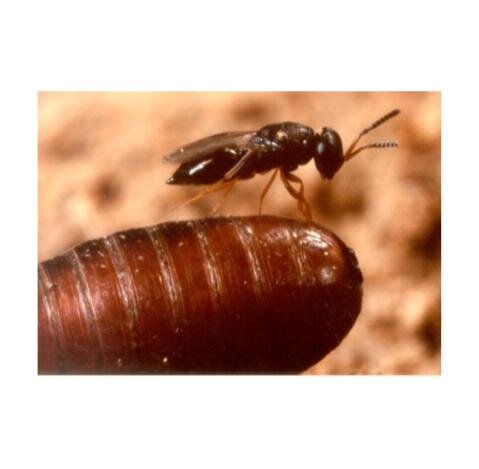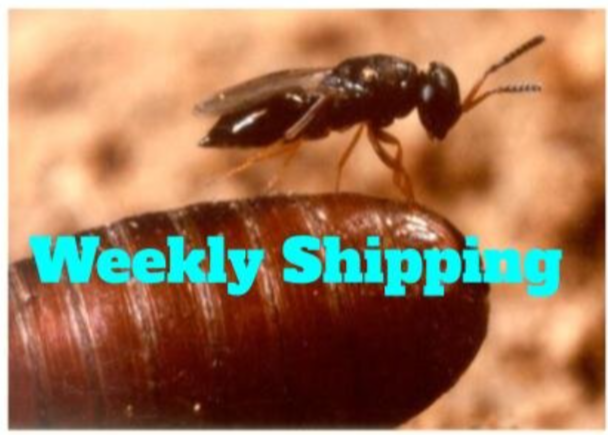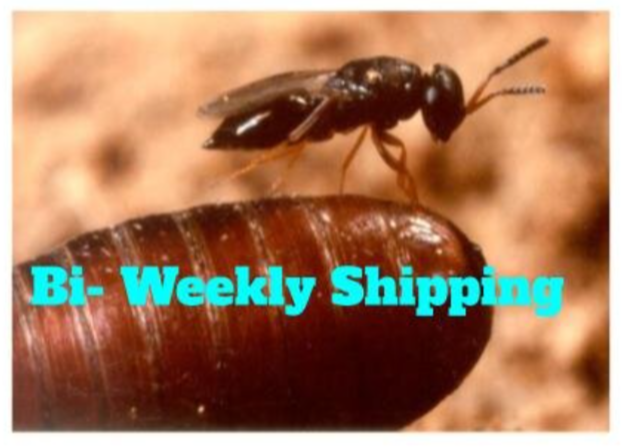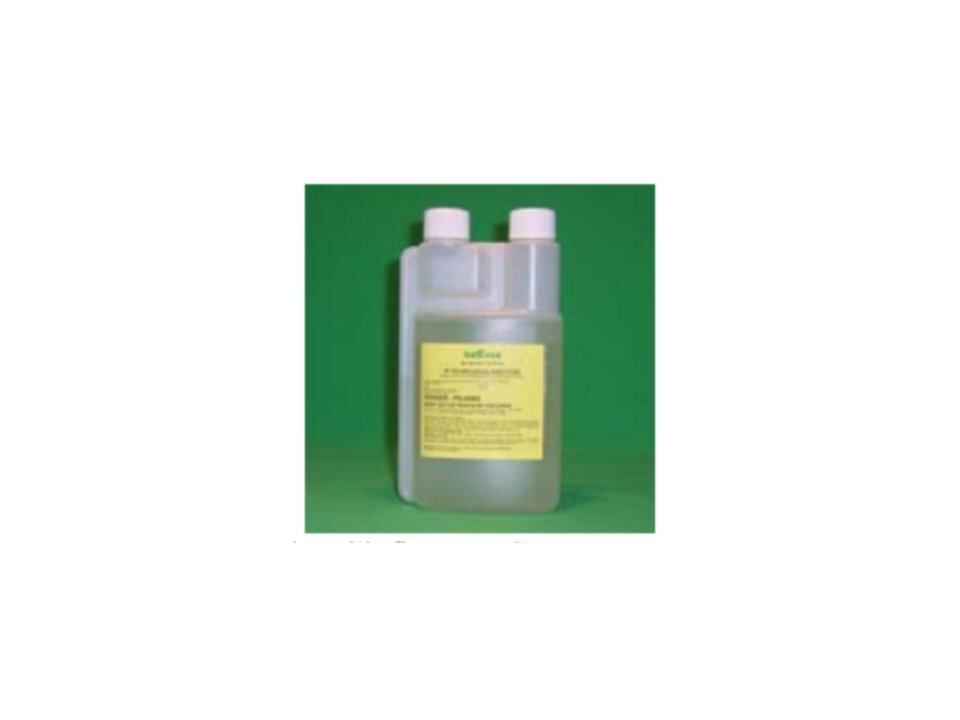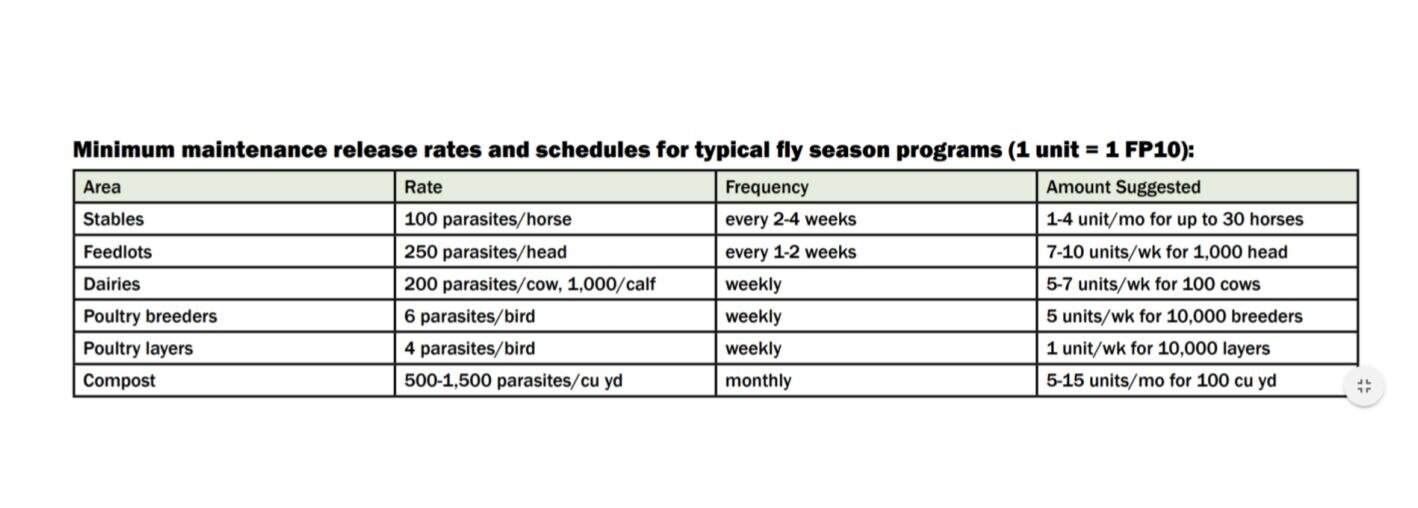Fly Control
OVERVIEW: Start regular releases of parasitic wasps when flies appear in the spring so colonies can reproduce and build up on the first generations of flies. Regular fly parasite releases during warm months combined with optional trapping of adult flies and minimizing fly breeding habitat constitute an effective, economical fly control program. Good early fly control is easier than attacking a population that has gotten out of control. Prolific and adaptable Muscidifurax raptorellus and aggressive Muscidifurax zaraptor are mixed with hardy Spalangia cameroni. Durable release stations are available to protect fly parasites. Use of fly traps in conjunction with fly bait will also reduce populations.
Beneficial FLY PARASITES
MIX OF MUSCIDIFURAX RAPTORELLUS, M. ZARAPTOR AND SPALANGIA CAMERONI PARASITIC WASPS. TARGETS FILTH BREEDING FLIES (HOUSEFLY, STABLE FLY, LESSER HOUSEFLY).
We supply a quality mixture of species of parasitic wasps developing inside fly pupae. These tiny wasps use biological radar to seek out maggots transforming into pupae, but don’t bother people or animals. They are shipped in breathable paper bags with wood shavings to cushion them in transit and absorb moisture.
STEPS TO THE SUCCESSFUL MANAGEMENT OF FLIES
By: Ron Whitehurst, PCA
1) REDUCE THE NUMBER OF ADULT FLIES: A single fly can lay up to 800 eggs a day, whereas a single parasite will attack less than 30 fly pupae a day. Flies also have an advantage of a shorter life cycle than parasites, and are able to travel greater distances faster than parasites. The shorter life cycle also allows flies to become resistant to insecticides faster than parasites. By keeping the number of adult flies down, parasites will be better able to keep pace with the number of fly pupae.
USE FLY TRAPS: Reducing the adult fly population early in the fly season (usually beginning after the first frost-free day of the year) will result in fewer fly problems for the rest of the summer. In humid areas and in wet manure accumulations, especially where manure is washed into pits, it takes both releases of parasites and bait stations to give excellent fly management.
Baited jug traps are easy to make, very effective, and keep the bait out of way of children and pets. Set up at least one bait trap inside each barn or shady area where you see high numbers of adults when you start releasing parasites. Trapping should continue through the season with parasite releases.
2) REDUCE FLY BREEDING SITES: Use good sanitation practices to eliminate conditions favorable to fly breeding: Frequent manure removal reduces the breeding sites. Keep areas around watering and feed troughs clean and dry. Maintain ventilation to keep manure dry and eliminate wet areas wherever possible. Large amounts of manure can be managed in a pond or storage where non-aerobic digestion is accomplished or by aerobic composting systems. Unprocessed manure can be piled and covered. This reduces the surface and heat builds up to reduce fly breeding. Dry manure will not breed flies. Fly parasites operate to a depth of 8 inches in manure, homing in with their biological radar on fly larvae that are about to pupate.
3) RELEASE FLY PARASITES: Fly parasites are micro wasps that lay their eggs inside fly pupae and prevent the flies from emerging as adults. Parasitic wasps are very effective against the housefly, biting stable flies, garbage flies, and the lesser housefly, which comprise 95% of the flies in manure accumulations. These parasites will also attack blow flies and bottle flies breeding in and around garbage dumpsters. The parasitic wasps only attack flies and will not bite, sting, swarm or bother anything else. They are nocturnal and are rarely seen during the day. They will eventually find and kill most of the flies at your location. However, because adult flies still can be migrating in, other control strategies such as trapping must be used. Biological control will work better for you if you and your neighbors use multiple strategies for fly control.
Parasite releases should be made early each spring at the first sign of emerging or immigrating adults to minimize the numbers of adult flies laying eggs. Because the fly has the edge, the population of fly parasites needs continuous reinforcement through augmentative releases parasites in order to maintain a high level of fly control. Once established, fewer parasites are needed to maintain an effective number. A few may overwinter outdoors, but yearly augmentation is necessary. With weekly releases, a noticeable reduction in flies can be expected in 4 to 6 weeks as the parasite population increases.
INTEGRATING CHEMICAL CONTROLS: Biological control works because of the entire complex of insectary-grown and naturally occurring predators and parasites. All natural enemies of flies are susceptible to pesticides, particularly when directed at manure. Reduce adult fly populations with baited traps. Apply fly control products such as balEnce biological fly spray, to adult fly resting areas. This way you keep biological control working for you and reduce the need for insecticides. Avoid chemical sprays within 48 hours of releasing fly parasites. ***balEnce is completely compatible with fly parasites.***


